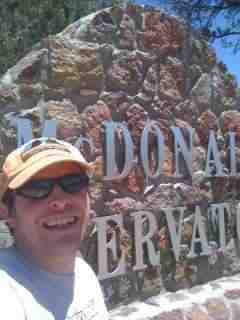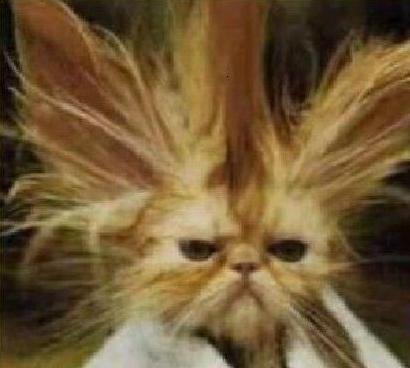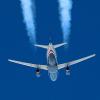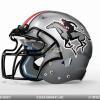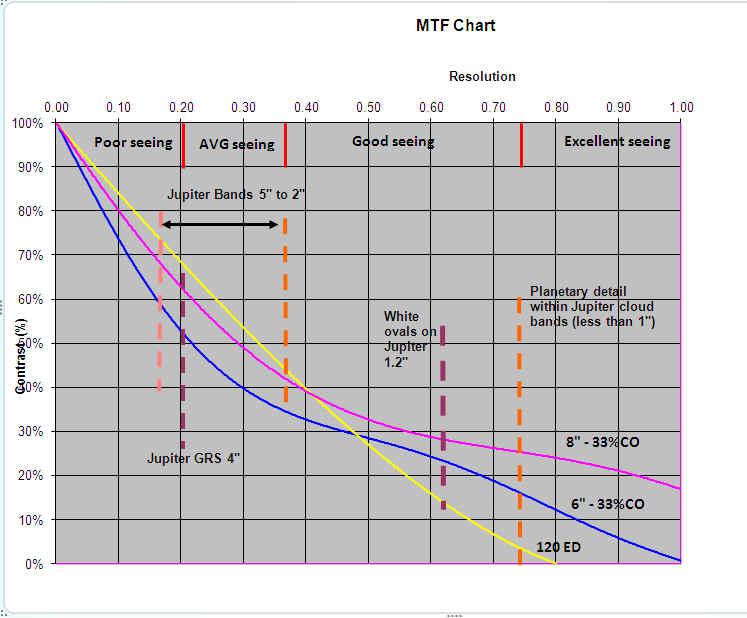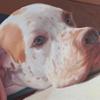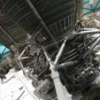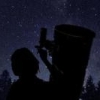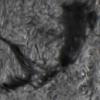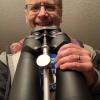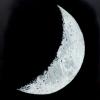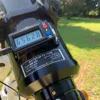
120mm ED refractor for planets - wrong choice?
#1

Posted 08 December 2013 - 03:03 PM
My main interest right now is the planets, but did I make a mistake getting a 4.7" ED refractor? I also have interest in getting a 16" or building an even larger dob, so would the refractor then be obsolete?
I'm wondering if I should cancel/return the refractor and put it toward a 16" dob instead?
#2

Posted 08 December 2013 - 03:29 PM
#3

Posted 08 December 2013 - 05:57 PM
Were it me, I would return the refractor and get the 16". That'd be the bomb on the planets, as well. And since you'll be doubling the aperture instead of cutting it in half, the WOW factor will be there too.
Of course, there's the grab-n-go factor to consider, too...
#4

Posted 08 December 2013 - 11:14 PM
CM
#5

Posted 09 December 2013 - 09:47 AM
One last thing to consider. Planets move fast. With the 120ED you can mount it on a goto setup and track the planets while observing. The mount will keep the planet in the center of your eyepiece. With the big clumsy dob you'll constantly be having to nudge the thing every few seconds. Dobs are better for DSO's because of the light grasp and because DSO's move much more slowly through the eyepiece and require fewer adjustments. But you said your primary goal was to view planets, which move quickly out of the FOV so a goto tracking mount is your best option, which means the 120ED scope.
#6

Posted 09 December 2013 - 11:38 AM
Well, it won't suffer as badly from thermal inequilibrium but nevertheless 4-5" refractors tend to take 30-60 minutes to "settle down" if moved to a site with a different temperature.The 120ED will do great on planets, splitting double stars, including tight doubles (try that with the dob) and DSO's. It won't require constant collimation nor will it suffer from cool down issues like the dob.
As for double stars: with research grade mirrors, proper temperature control and accurate collimation, a Dobsonian / Newtonian will do very well indeed. For close doubles with equal or nearly equal components, the modification of the diffraction pattern caused by the approximately 20% central obstruction typical of these scopes is actually beneficial though the effect is noticeable rather than substantial.
But you can stick an equatorial platform under a dob ... and have it track at least as well as a low end equatorial mount, for an hour or two at a time, which is a great boon.One last thing to consider. Planets move fast. With the 120ED you can mount it on a goto setup and track the planets while observing. The mount will keep the planet in the center of your eyepiece. With the big clumsy dob you'll constantly be having to nudge the thing every few seconds. Dobs are better for DSO's because of the light grasp and because DSO's move much more slowly through the eyepiece and require fewer adjustments. But you said your primary goal was to view planets, which move quickly out of the FOV so a goto tracking mount is your best option, which means the 120ED scope.
Aperture rules for planetary detail; given equal optical quality, almost nothing else matters. Small/medium fracs are great for low power views of star clusters etc. and unequalled for solar work because there's no secondary mirror to fry, and fracs have much better resistance than other designs to the sort of horrendous seeing that usually prevails when observing the sun.
If by "120mm ED" you mean the common Synta / Orion / Skywatcher 120mm f/7.5 ED doublet, it does have quite a lot of chromatic aberration: you really need an anti-fringing filter for viewing the moon or planets with it.
#7

Posted 09 December 2013 - 03:26 PM
I would focus more on getting some planetary eyepieces, now. TV Plossls are relatively inexpensive and will out perform the Naglers and Ethos, ES 100 deg eyepieces on sharpness and contras on the planets.
Even if you get a larger dob later, try and hold onto your 8". It's an intermediate size and easy to work with, and wont bog you down if you just need a few hrs of deep space observing.
Stop hanging out in the equipment forums and start visiting the planetary forums and eyepiece forums, and things related to what you already have. The equipment forums will kill you and make you think you keep needing "more" "more" "more."
Its more fun to look through your own gear at space, then to look at it and talk about it, and never use it.
...Ralph
#8

Posted 09 December 2013 - 04:54 PM
It's not often than you will be able to use more than 120mm aperture on planets because of your location. And when that perfect seeing comes along, take out the 8" too. Your 120ed will give you a nicer view 90% of the time.
#9

Posted 10 December 2013 - 12:31 PM
#10

Posted 10 December 2013 - 02:01 PM
#11

Posted 10 December 2013 - 03:44 PM
#12

Posted 10 December 2013 - 04:25 PM
#13

Posted 10 December 2013 - 07:47 PM
It's always nice to keep learning.
Eric
#14

Posted 11 December 2013 - 01:31 AM
Taras
#15

Posted 12 December 2013 - 09:47 AM
I think your approach is in theory an excellent one. This is the approach I have been advocating for making comparisons, and I thought it was reallly great for you to include references to different detail sizes on Jupiter as a way to match MTF performacne to real world performance.
There is a flaw however. For the 120ED scope, you assumed it would be "Perfect" and at f/7.5, even with FPL-53 glass, the Polychromatic Sthrel is liklely about .92 or .93.
When people compare refractors to reflectors, they always handicap the reflector for central obstruction, but give the refractor a pass and ignore polychomatic Sthrel.
Not saying that you made a mistake buy ordering the 120mm, but if your reflector is very good optically, don't expect to see more in the 120ED, though my bet is that you wont' see any less.
Also, after using an 8" scope, going to a 120mm, there is a big dropoff in brightness. At 200x the 8" is going to have a much brighter image, which is an aid in combating floaters and for resolving the lowest contrast detail on the target.
I expect though that the 120mm will indeed be as good, but if you were looking for a big improvement, then yes, you may have made a mistake.
But if you want a great all around refractor that can do everyting competently, the 120mm looks like a fantastic choice.
Don't forget Polystrehl though. To plot MTF against an reflector and include the CO, and ignore polysthrel is a kind of bias for refractors that while unintentional, badly distorts these kinds of comparisons.
Suiter discusses Polystrehl in his chapter on charmatic aberration. Even triplets loose some contrast to Polysthrel. An excellent triplet with aspherized elements (gee, who does that?) can get close to perfect.
But a fast doublet with no asperizing is probably .92 at best when you look at the full spectrum.
Again, I have to tell you that I absolutelyl love the chart. I admire the effort you put into this. It is clear that you have studied MTF and have a great grasp of the inportance it can play in comparing different apertures.
#16

Posted 12 December 2013 - 10:02 AM
Unless your dob is very fast and has a very large CO, then this chart is comparing different scopes.
And this. Hate to say it, but if your dob is not already using a high quality mirror, you may have found a more meaninful improvement in performance by sending the mirror to someone for re-figuring. You could also slightly under-size the secondary (if total obstruction is not below 25% already) to further improve contrast transfer.
Again, I don't think the 120ED is going to be any worse than what you have, but my concern for you is that unless your current mirror is poor, the 120ED won't be any better.
If you want to make a meaninguf step up, here would be my prescriptoin.
Asess your current mirror. If the SA and smoothness are pretty good (less than 1/20th roughness and less than 1/6th SA), then leave the mirror alone.
If not, spend $600 to have the mirror refinished and recoated to a high Strehl.
The, buy a pair of binoviewers..
You can do this for less than you will spend on a 120ED scope.
Just an alternative, but qood quality apeture (the more the better) and a pair of binoviewers to me are the planetary observers best tools.
And don't let the "Seeing" people lead you to beleive that the bigger apture is somehow wasted. Side by side, 6" APO to C14, it was very rare for me to have a night where both scopes were side by side that I could not get at least a little more detail out of the C14.
That just takes commitment and patience (which the binoviewers make much easier).
#17

Posted 12 December 2013 - 10:16 AM
Second to last post.. Direct comparison on night of less than great seeing...
#18

Posted 12 December 2013 - 10:39 AM
I donot think that the 8" with low CO ratio (say 20% and less) and high PTV will be out performed by a 120ED.
I had the 2 kinds in hands and this is a fact.
We should assess also the fact that for very low contrasted fine feature the 120ed is not excellent, also in the blue channel where venus clouds on mine were almost absent.
The consequence was the non use of the 120ed. For the 1" arc resolution I prefer the use of the MN127 highly more acurate for such exercise, it shows easily venus clouds in blue channel and other colors and allow access of very low contrasted features of little sizes on planets.
If it is a good scope, not an excellent scope, in white light its potential is actually restrained in comparison with better designs and of less prices (1000 for the MN and 1250 for the 120ed).
Now it can make observations by the rear of the tube which is an avantage.
The curves introduced on this forum must be pushed away, in blue channel, by the actual optical acuracies of each, by the seeing involvement which is almost 2 danjon scale steps in favor of the 120mm (3/5 in the 8" can be 4-5/5 in the 120 with about 67% contrast kept only in the 8" in comparison).
At final this is always a 120mm, not more, the 8" will show always more in holes of seeing even at 3/5 mostly.
Stanislas-Jean
#19

Posted 12 December 2013 - 12:53 PM
Thank you again Eddgie
Eric
#20

Posted 13 December 2013 - 09:38 AM
If you want to add an SCT I might suggest a 10 or 11 inch. I have an 8 inch and the 120ED and the SCT shows me nothing the 120 doesn't. In fact on many targets like the Andromeda and Dumbbell, the 120 shows me more. It may be because I'm viewing from skies with fairly high humidity and light pollution and where you are may be different. But you may want to look through an 8" SCT before buying one.
#21

Posted 13 December 2013 - 10:57 PM
#22

Posted 14 December 2013 - 05:47 PM
8" F6 with decent mirrors and a 25% obstruction will eat an 120mm ED for lunch. Proper collimation is a must but it's a no contest. 6" F8 with a 20% obstruction? Still better but close. A 100-120mm scope is better in poor seeing. My 4" F15 Jaegers is often better than my 6" F10 Jaegers on poor nights. Poly strehl on the 6" F10 isn't great either. My 8" F6 newt is a good bit better on good nights with proper cool down. (0.98 Strehl)
Not where I live.
#23

Posted 14 December 2013 - 08:56 PM
But your plots were beautiful. You clearly grasp the key concept of the MTF plot, which is to show how contrast for different size detail will be affected by the aperture and by things like CO, CA, or optical quality.
It is a fascinating topic, and it has always pained me that more people have not made an effort to really understand the basics of the Modulation Transfer Function.
So, a tip of my hat to you. You have clearly studied the topic and have been able to apply it to the real world and presented a graphic that was easy to understand and hopefully educational for anyone that took the time to study it.
I sure enjoyed seeing it....




